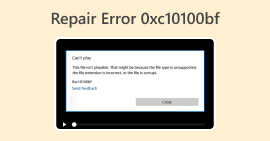Step-by-Step Guide: How FFmpeg Fix Corrupted Videos [2025]
There are several factors why a video becomes corrupted like interrupted transfers, incomplete downloads, codec problems, software glitches, hardware failures, power outages, malware, incompatible players, or physical damage to storage devices. Well, regardless of the cause, a corrupted video file can be repaired. You heard it right! It can be repaired.
In this article, you are going to learn how FFmpeg fixes corrupted video, understand its features, as well as its pros and cons. We will also compare it to another powerful video repair tool to give you a guide on your decision. Do you have corrupted video files on your device and want to restore them, read this whole post now.

Part 1. How FFmpeg Repairs Corrupted Videos
FFmpeg is a free video repair tool that can be used to fix corrupted video files. It supports a variety of video formats, such as MOV, MP4, MKV, AVI, and more. The tool is capable of fixing various issues, including bad files, streams, and corrupted videos. Moreover, it provides users a chance to customize and control the repair process. Through its command-line interface, users can leverage advanced options for repairing video files, offering a high degree of flexibility in the recovery process. This feature empowers users to tailor the repair according to specific needs and preferences, allowing FFmpeg to fix corrupted videos and any other video problems effectively.
Main Features
◆ Works with various video/audio formats.
◆ Uses a command-line interface for customization.
◆ Fixes damaged videos by analyzing errors.
◆ Ensures proper alignment for audio and video tracks.
◆ Changes video size and aspect ratio.
◆ Converts videos to different codecs/formats.
◆ Allows trimming, cutting, or extracting specific parts from videos.
Pros
- Repairs damaged or frozen videos effectively.
- Corrects audio-video synchronization issues.
- Available for various OS, including Windows, Mac, and Linux.
- Allows easy resizing and aspect ratio adjustments.
- Converts videos for wider device compatibility.
- Provides editing features for customization.
Cons
- Requires some learning for effective use.
- The command-line interface may be intimidating for beginners.
- Repair success depends on the extent of damage.
- Limited graphical user interface (GUI) options.
Step-by-Step Guide to Use FFmpeg to Repair Corrupted Videos
Step 1. Visit the FFmpeg download page. Hover over the Windows icon and click on the top link for Windows builds from gyan.dev. Download the highlighted zip file.
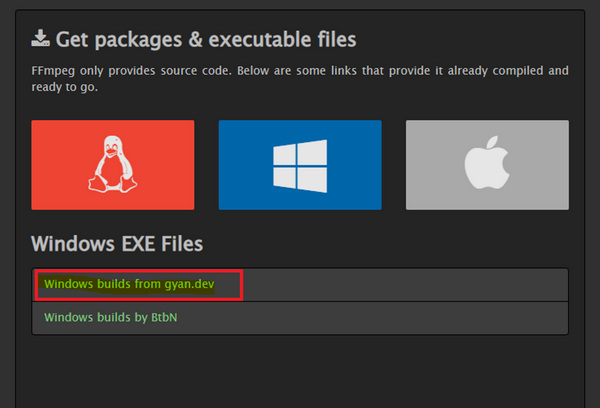
Step 2. Open File Explorer and make a new folder on your main storage drive called ffmpeg. Open the downloaded FFmpeg build folder, go to the bin folder, and copy the three files. Paste these files into your newly created folder.
Step 3. Now, search for Advanced system settings in the Windows search bar. Click Environment Variables. Under system variables, select Path and click Edit. Click New and add it to the folder you created earlier, then click OK.
Step 4. Open a terminal window and run the command. If installed correctly, it will return the installed version and build information.
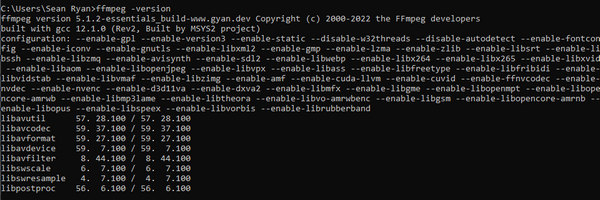
Now that you have done installing and setting it up. Let’s proceed to how to use it to fix corrupted videos. Make sure that you are on the administrator account of your device.
Step 5. Now, open the Command Prompt from your search and click Run as administrator.
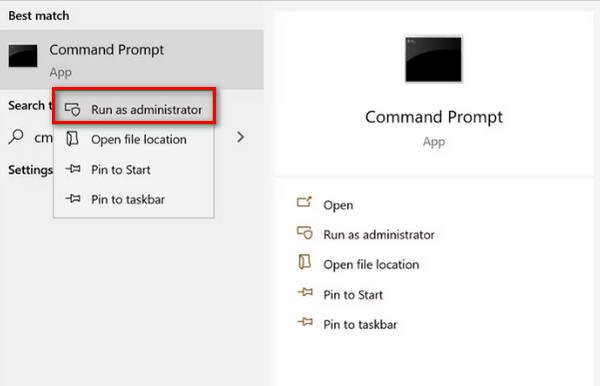
Step 6. Next, it is necessary to change the directory and to mention the current path of the corrupted video file. To do this, type cd Desktop in the Command Window and press Enter.
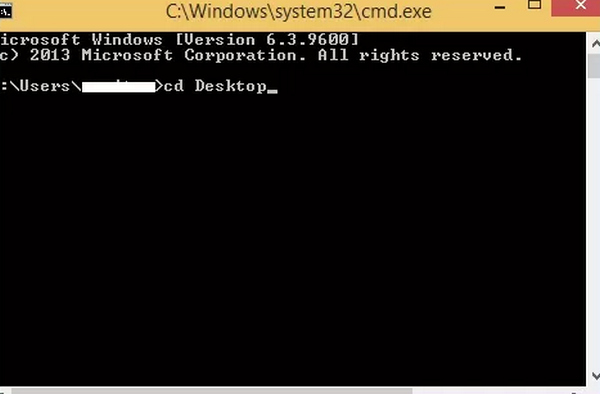
Step 7. Type in the command to repair the corrupted video and click Enter.
| ffmpeg –i corrupted.mp4 –c copy repaired.mp4 |
This tool can truly be beneficial, especially when it comes to repairing, converting videos, etc. The only thing is that it's kind of overwhelming to use for beginners, so it’s necessary to learn how this tool works before using it. Nevertheless, FFmpeg can fix corrupted videos seamlessly when their complex nature is understood completely.
Part 2. Comparison: FVC Video Repair vs. FFmpeg
FVC Video Repair fixes most common video problems, like corrupted videos, loss of data, no audio, greenscreen, video glitches, etc. Powered by AI, this tool can achieve a full-automatic repair for every broken video. The program will automatically start detecting information on the video files, including size, duration, resolution, bitrate, encoder, and frame rate. Unlike FFmpeg, you can preview your video here to check if the repair is successful then save it directly to your desired folder in your computer.
FVC Video Repair vs. FFmpeg
| FFmpeg | FVC Video Repair | |
| Overall | ⭐⭐⭐⭐ | ⭐⭐⭐⭐ |
| Ease of Use | ⭐⭐⭐ | ⭐⭐⭐⭐⭐ |
| Support | ⭐⭐⭐⭐ | ⭐⭐⭐⭐⭐ |
| Design | ⭐⭐⭐⭐ | ⭐⭐⭐⭐⭐ |
| Pricing | Free | $19.96 Monthly |
| Platform | Windows, Mac, and Linux | Windows and Mac |
| Support Formats | MP4, AVI, MKV, MOV, FLV, WMV, MPEG , WebM, 3GP, and ASF | MP4, MOV, and 3GP |
| Conversion Speed | Medium | Fast |
| Free Trial | Free | Free |
Despite the fact that it’s not free compared to FFmpeg, FVC Video Repair is easier to use. Nevertheless, both these tools have only one common goal, which is to repair videos.
Part 3. FAQs about FFmpeg Fix Corrupted Videos
What is FFmpeg?
FFmpeg is a powerful open-source software that provides a collection of tools for handling multimedia data. It is widely used for tasks like video and audio processing, conversion, and manipulation.
Can FFmpeg fix all videos?
FFmpeg can attempt to repair a wide range of video formats by analyzing and adjusting file structures. However, the success of repair depends on the extent and nature of the video damage. While it is versatile, it may not cover all obscure or proprietary formats.
Can you use FFmpeg for video repair in VLC?
FFmpeg and VLC are related but distinct tools. VLC incorporates FFmpeg's libraries for multimedia playback but does not directly use FFmpeg for video repair. To repair videos using FFmpeg, you typically run commands in a terminal. VLC has features for playing damaged videos but doesn't rely on FFmpeg for repair functionality.
Is FFmpeg user-friendly for beginners?
FFmpeg primarily uses a command-line interface, which may be intimidating for beginners. While it offers powerful features, users with little technical knowledge might find it challenging. However, there are also graphical user interfaces available that provide a more user-friendly experience.
Can FFmpeg be used on different operating systems?
Yes. FFmpeg is cross-platform and can be used on various OS, including Windows, Mac, and Linux. Users can follow similar procedures for installation and usage across these platforms.
Conclusion
Dealing with corrupted videos is made more accessible with video repair tools. Allow FFmpeg to fix corrupt video, and the FVC Video Repair either of the two works at their ultimate best. So, worry no more about corrupted videos and start utilizing these tools for effective video restoration.



 Video Converter Ultimate
Video Converter Ultimate Screen Recorder
Screen Recorder
